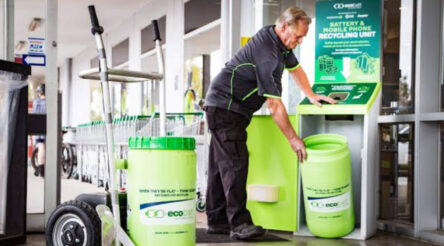A new deal for manufacturing – SME experience shows we should look again at Australian made by Serena Ross

Our campaign to crowd source a new deal plan for manufacturing post Covid-19 turns to a SME manufacturer for a live case study. Today Serena Ross asks companies to look around at what is already made in Australia – a lot more than many think, so why not use that capability? Submissions to [email protected].
For decades, the cultural norm among original equipment manufacturers (OEM) has been to outsource production to contract Asian manufacturers.
In the wake of the Covid-19 crisis, the most important opportunity we have is to create a new perception – that the “smart move” is to manufacture in Australia.
We have a critical window of opportunity as frustration and anger among Australian manufacturers with their Asian supply chain is at its peak.
As a manufacturer of printed circuit board assemblies (PCBA) for OEMs across all industries, I have personally witnessed the pain of companies that have had their supply chains disrupted.
Their frustration is not just about products not being delivered but the lack of communication and increasing prices due to COVID-19 delays.
In the past month, I have had more calls from companies looking to bring their manufacturing back to Australia than ever before. We need to translate this interest to action with targeted support, as other countries such as Japan are doing.
There are two aspects to the cultural shift required. The first is to challenge the perception that intermediate manufacture of sub-assemblies does not happen in Australia. The second is to shift the assumption that is cheaper to manufacture in Asia.
Awareness
The most infuriating aspect of this crisis for me has been the number of people in social media forums discussing the emergency development of medical equipment, telling others that it is not possible to manufacture PCBAs in Australia.
My company Circuitwise alone manufactures hundreds of thousands of PCBAs a year for a range of devices in safety and performance-critical industries including mining and medical devices.
This misconception is widespread across a range of other product types as demonstrated in the scramble to find suppliers of everything from flow sensors and valves for ventilators to face-masks and medical-grade plastics.
The Advanced Manufacturing Growth Centre (AMGC) recently called for expressions of interest from companies looking to supply goods and services in tackling the Covid-19 outbreak.
The initiative has garnered over 2000 submissions. The resulting Manufacturing Response Register is being used to align capabilities with current needs and the AMGC has indicated the database will be used in the government’s “longer-term strategy on how to leverage the diversity of manufacturing capabilities for future requirements and preparations”.
The challenge in developing such a database will be in verifying what is actually Australian made and the quality of the goods.
In the PCB assembly business, there are unfortunately several companies that look as if everything is made in Australia but sub-contract the work to Asia.
Also, a challenge with the current crisis is that much of the medical equipment needs to be supplied by companies that have ISO 13485 medical quality certification, as Circuitwise does.
Despite the goodwill of the many companies that have put up their hand to help and relaxation of regulatory requirements, products still need to be certified and produced using strict quality control systems.
If we are to rebuild our manufacturing industry, it is clear it will need to be premised on “advanced manufacturing” concepts outlined in the AMGC’s Sector Competitiveness Plan.
The AMGC says we need to “change the lens on the role and measurement of manufacturing in the economy”.
We need to change the focus from what we do, driven by outdated Standard Industry Code (SIC) classifications, to how we do it. For example, if our databases of manufacturers included an attribute ISO 13485 qualifications, the current Covid-19 procurement challenge would be a lot easier.
While there has been a great effort to support Australian companies exporting over the years, there now needs to be a concerted effort to market our manufacturing capability within Australia.
Just as we are now encouraging Australians to plan their post-lockdown holidays within Australia, we need to encourage Australian manufacturers to plan their next product to be manufactured in Australia.
Cost
The second major component of the required culture shift is the assumption that is cheaper to manufacture in Asia.
In the electronics industry, this assumption may have been valid thirty years ago when designs had a lot of hand-placed components, which made the manufacturing process labour intensive.
However, new designs are nearly 100 per cent surface mount components.
Using pick-and-place machines operating at 120,000 components/hour, Australian manufacturers have now reach price parity with Asia.
Circuitwise recently won a manufacturing contract with Siemens against direct competition from a contract manufacturer in Asia. The contract is for PCBAs for the communications module in Siemens Fusesaver and Compact Modular Recloser.
Siemens’ procurement team analysed all the factors of manufacturing in Asia and found that Circuitwise delivered a lower overall price position over a three-year period. The review considered factors such as cost of freight, duty, the mix of high and low volume work, and speed to market.
This example is being replicated across all product types and industries. When you take into account the risks and inconveniences of dealing with Asian subcontractors, the case for manufacturing in Australia is becoming attractive for many OEMs.
The case particularly stacks up for high-value products that are subject to strict regulatory approval processes, such as those in medical, mining and aerospace industries.
Manufacturers are typically required to have full traceability of components and absolute reliability that is not easily found elsewhere.
While we have known that we were close to price parity for some time, what the Covid-19 crisis has done is shine a spotlight on the risks and hidden costs of manufacturing in Asia.
It is often the case that people don’t change their bad health habits until they have a heart attack.
With our economy going through the equivalent of cardiac arrest, now is the time to focus on building a healthy manufacturing industry and aggressively challenge the cultural norm of what the “smart move” is.
Serena Ross is the General Manager of Circuitwise Electronics Manufacturing. Circuitwise is an Australian-owned contract manufacturer of electronic devices, specialising in complex products such as those used in the medical and mining industries. Situated in Bella Vista NSW, the company employs over 70 people.
@AuManufacturing’s new deal plan for manufacturing is brought to you with the support of Bosch Australia Manufacturing Solutions

Picture: Serena Ross
Subscribe to our free @AuManufacturing newsletter here.
Topics Manufacturing News
@aumanufacturing Sections
Analysis and Commentary Awards Defence Manufacturing News Podcast Technology Videos










